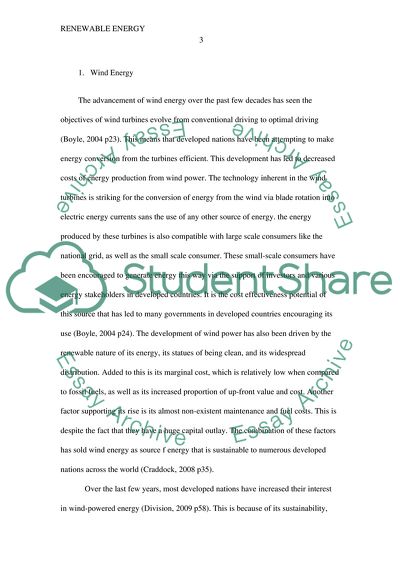Cite this document
(Renewable Energy Sector Coursework Example | Topics and Well Written Essays - 1500 words, n.d.)
Renewable Energy Sector Coursework Example | Topics and Well Written Essays - 1500 words. https://studentshare.org/environmental-studies/1774538-take-3-renewable-energy-sourcessolar-wind-hydro-and-assess-the-progress-of-developed-nations-in-utilizing-them-to-reduce-reliance-upon-traditional-fossil-fuels-1500-word
Renewable Energy Sector Coursework Example | Topics and Well Written Essays - 1500 words. https://studentshare.org/environmental-studies/1774538-take-3-renewable-energy-sourcessolar-wind-hydro-and-assess-the-progress-of-developed-nations-in-utilizing-them-to-reduce-reliance-upon-traditional-fossil-fuels-1500-word
(Renewable Energy Sector Coursework Example | Topics and Well Written Essays - 1500 Words)
Renewable Energy Sector Coursework Example | Topics and Well Written Essays - 1500 Words. https://studentshare.org/environmental-studies/1774538-take-3-renewable-energy-sourcessolar-wind-hydro-and-assess-the-progress-of-developed-nations-in-utilizing-them-to-reduce-reliance-upon-traditional-fossil-fuels-1500-word.
Renewable Energy Sector Coursework Example | Topics and Well Written Essays - 1500 Words. https://studentshare.org/environmental-studies/1774538-take-3-renewable-energy-sourcessolar-wind-hydro-and-assess-the-progress-of-developed-nations-in-utilizing-them-to-reduce-reliance-upon-traditional-fossil-fuels-1500-word.
“Renewable Energy Sector Coursework Example | Topics and Well Written Essays - 1500 Words”. https://studentshare.org/environmental-studies/1774538-take-3-renewable-energy-sourcessolar-wind-hydro-and-assess-the-progress-of-developed-nations-in-utilizing-them-to-reduce-reliance-upon-traditional-fossil-fuels-1500-word.


